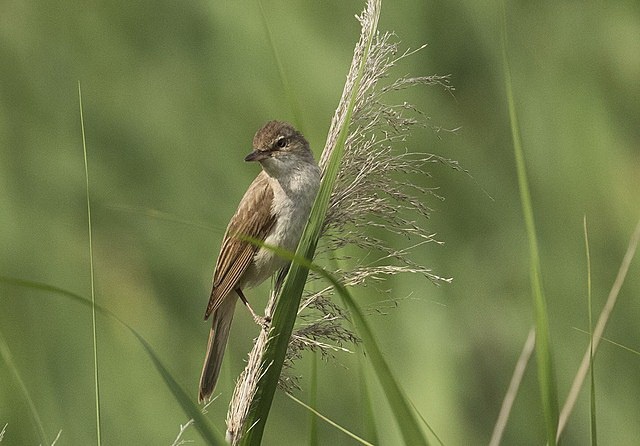Great reed warbler avoids being roasted by the sun
During migration, the great reed warbler may climb to extreme altitudes, Sissel Sjöberg and colleagues show. Presumably, that is to control their body temperature.
Imagine: the great reed warbler, a medium-sized songbird, climbs up to 6 kilometers above ground level during migration. The discovery of Sissel Sjöberg and colleagues also surprised the researchers themselves.
The birds breed in Europe and overwinter in tropical Africa; in both locations, they stay in reed beds. So, they make a big trip twice a year. They typically fly at night and use the day to rest and eat.
Nonstop
But when great reed warblers cross the Mediterranean, they cannot land. And when they fly over the Sahara Desert, it makes no sense to go down, because there is nothing edible there. Across such barriers, they continue to fly during daytime, traveling more than 30 hours non-stop if necessary.
To find out more about flight behaviour during migration, Sjöberg equipped several birds with data loggers that record various data during migration: light, ambient temperature, and altitude. In addition, the data loggers register the movements of the birds: whether they are flying, resting, or moving on the ground in search of food.
The birds fly at night at an altitude of 2400 meters on average, it turned out, which is already quite high. But if they prolong their fly into daytime, they go more than twice as high. At dawn they quickly climb to about 5400 meters, up to more than 6000. At dusk, they descend in an equally short time.
Why do they do that?
From an altitude of 1500 meters on, temperature and wind speed are the same between day and night; the temperature at 2400 meters is about 14 °C. So, that is no reason for going higher during daytime.
Heat radiation
A difference between day and night is the presence of the sun. The great reed warblers, the bodies of which are already warm due to their flapping flight, cannot stand the solar heat radiation, Sjöberg thinks. It puts them in danger of getting overheated. At 5400 meters it is 9 °C below zero; there, they will not be overheated by solar radiation. So, when the sun is shining, the birds better fly much higher.
An additional advantage may be that during the day, the birds have a better view of the landscape when flying higher. Also, they are out of reach of birds of prey, especially Eleonora’s falcon, which hunts up to 3500 meters.
The biennial migration is a great achievement. The long flying periods in which the great reed warbler goes extremely high during daytime make it extra impressive. Hats off.
Willy van Strien
Photo: Great reed warbler in breeding habitat. Zeynel Cebeci (Wikimedia Commons, Creative Commons CC BY-SA 4.0)
Source:
Sjöberg, S., G. Malmiga, A. Nord, A. Andersson, J. Bäckman, M. Tarka, M. Willemoes, K. Thorup, B. Hansson, T. Alerstam & D. Hasselquist, 2021. Extreme altitudes during diurnal flights in a nocturnal songbird migrant. Science 372: 646-648. Doi: 10.1126/science.abe7291
